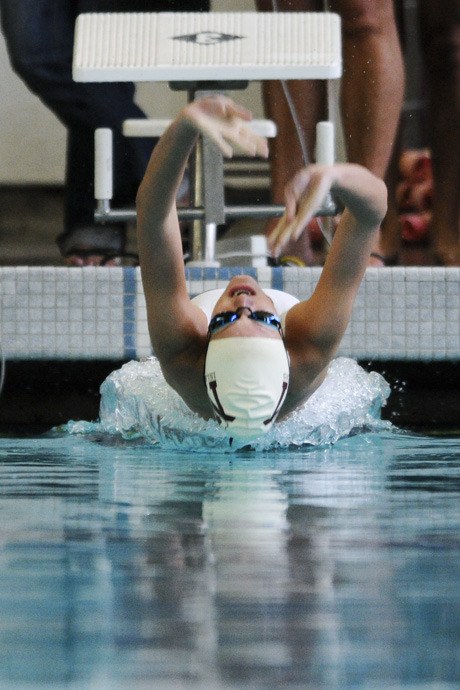It is happening in communities throughout King County. Community pools built by King County with funding from 1960s-era Forward Thrust Bonds are coming to the end of their useful lives. Cities and school districts already strapped with paying for public services and education are letting them go. The Northwest Center, which operates the Mary Wayte Pool, is ceasing operations at the Island pool as of Dec. 31. City officials are trying to find a new operator to run the pool in the short term. But educators and city officials agree that the pool is outdated and inadequate. Neither wants to take on the responsibility of operating or even constructing a new pool.
But it wasn’t always that way.
According to HistoryLink.org, the nearly $50 million raised by Forward Thrust Bonds, at the tail end of the 1960s, helped leverage a massive amount of spending on parks and recreation facilities, including pools throughout King County in the 1970s.
“With $49.2 million from the bond, the county government was able to leverage millions more in grants and matching funds from other state and national programs. As a result, King County’s park system doubled in size, adding more than 4,000 acres, 53 miles of waterfront, and miles of trail rights of way. One of the most notable Forward Thrust park initiatives was the creation of the aquatics system of sixteen indoor pools and one outdoor pool.”
Nearly four decades later the situation is vastly different. King County, facing a fiscal crisis in 2002 and 2003, unloaded pools, including Mary Wayte Pool and several county parks including Luther Burbank Park to cities such as Mercer Island. The reasons were monetary, yet a closer look reveals that pools had begun to take a back seat in policy changes that set the county parks and recreation in a different direction.
Again, the Museum of History and Industry’s Historylink.org tells the story.
“In spring 2002, the County Metropolitan Parks Task Force was established to identify ways to keep the county’s parks and recreation system open in 2003 and beyond and to restore stability to the parks system by removing it from dependence on the general fund. The task force issued its recommendations in June 2002 and called for the county to:
• Refocus its parks and recreation mission to provide for regional trails, regional passive parks, regional resource and ecological lands, regional active recreation facilities and rural parks;
• Transfer all local facilities within cities and work to transfer local facilities in potential annexation areas;
• Implement a broad variety of new entrepreneurial strategies to help raise revenues to support park operations;
• Facilitate the acquisition and development of active recreation facilities by convening potential partners and providing capital funding when appropriate rather than assuming ongoing operation and maintenance obligations.
The word ‘pool’ is noticeably missing from the 2002 directives.
Cities, school districts, nonprofits and even the state stepped up across the county to take on the pools. Yet, the bottom line is that the pools are popular but expensive to maintain.
Recent figures from the city of Seattle indicate their system of 10 pools costs about $6.2 million a year to operate and brings in about $3.2 million in revenue — for a net cost to the city of $3 million.
On the Eastside, at least 10 or more pools are right at the 40-year mark.
In addition to Mary Wayte Pool, three other Eastside Forward Thrust pools also operated by Northwest Center have closed down over the past two years. They are the Northshore (Ruiz-Costie) Pool, the Carole Ann Wald Memorial Pool at St. Edward State Park, and the City of Redmond’s Hartman Pool. Among other uses, they are key to swimming programs at Eastside high schools.
According to Inglemoor High School Athletic director Frank Naish, “those pools are not coming back.”
The loss of the pools is painful to competitive swimmers. Instead of three pools to hold practices or meets, the teams meet at 5 a.m. for 90 minutes of practice at the Juanita Pool, he explained. And in a twist of fate, some meets for the Eastside school are now being held at Mary Wayte Pool.
“The state of swimming is in a perilous condition,” the educator said. “It has taken a huge hit. And it is not just high school students. All kinds of people are affected.”
However, in the case of Mary Wayte Pool, Mercer Island High School Athletic Director told the Reporter he is confident that the pool will still be operating in the near term.
The City of Bellevue is also struggling with aging pools. After the call came for a new aquatics center, the city conducted extensive public outreach about area pool use. City staff met with nearby cities, school districts, Bellevue College and King County and others.
The findings included:
• All groups and organizations identified the need for additional aquatics facilities to serve the Eastside;
• The local competitive swimming community is very active, with 4,277 families being members of private outdoor pools in Bellevue, and 3,640 swimmers participating in 26 Eastside swim clubs;
• Most area high schools, including all Bellevue schools, do not have their own pools, and rely on other aquatic facilities to serve their competitive swim programs; and
• Growth in many local aquatics organizations/programs is constrained due to a lack of pool time and space.
The city of Mercer Island is hoping to find a contractor to take on the pool for a period of between one and three years before Dec. 31.


